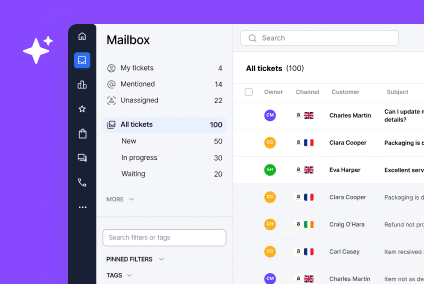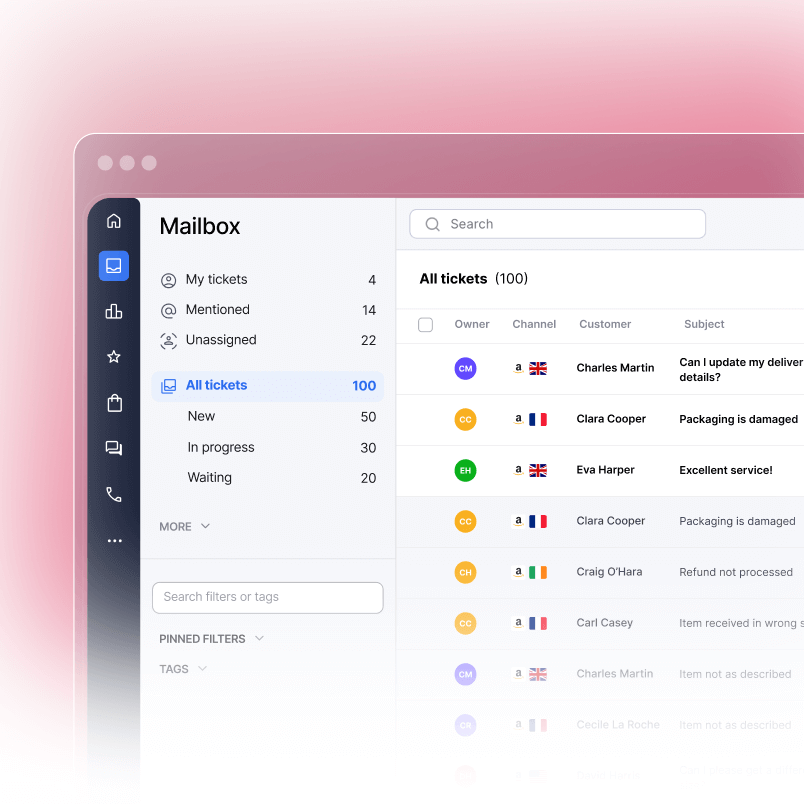Negatives Feedback bei eBay ist wie ein schwarzer Fleck auf dem Status eines Verkäufers – und zu wissen, ob und wie man darauf reagieren sollte, kann sich als schwierig erweisen.
Schließlich ist das Feedback für eBay-Geschäfte von entscheidender Bedeutung, und positive Kommentare sind immer nützlich, um die Zahl der Kunden zu erhöhen. Aber eine schlechte Bewertung, selbst wenn sie anonym abgegeben wird, kann sich negativ auf Ihren Umsatz auswirken. Hier erfahren Sie, wie Sie am besten vorgehen.
Sollten Sie auf negatives Feedback reagieren?
Das Problem bei der Beantwortung negativer Rückmeldungen von Käufern ist, dass es die Sache noch schlimmer machen kann. Nicht nur, dass Ihre Antwort auf den Kommentar diesen noch stärker hervorhebt, der Käufer hat auch immer das Recht auf einen letzten Kommentar, so dass er immer das letzte Wort hat.
Es besteht jedoch kein Zweifel daran, dass das Feedback von Verkäufern für künftige Kunden von großer Bedeutung ist. Ein kurzer Blick auf Ihre Seite und potenzielle Käufer können feststellen, ob Sie ein erfahrener eBay-Verkäufer sind, wann Sie mit dem Verkauf auf der Website begonnen haben, wie viele Gebotstransaktionen Sie in den letzten sechs Monaten getätigt haben und – was am wichtigsten ist – ob frühere Kunden mit Ihrem Service zufrieden waren.
Wenn Sie sich dafür entscheiden, negative Kommentare zu ignorieren, könnte dies dazu führen, dass potenzielle Käufer annehmen, dass Sie sich nicht um Ihre Kunden oder deren Anliegen kümmern, was Ihrem eBay-Geschäft ernsthaft schaden könnte.
Es geht also nicht um die Frage, ob Sie auf negatives Feedback reagieren sollten, sondern wie.
Angemessenes Reagieren
Wenn Sie negatives oder neutrales Feedback erhalten, lohnt es sich, die Situation zu erklären. So können Sie die Wogen mit dem unzufriedenen Käufer glätten und gleichzeitig sicherstellen, dass auch zukünftige Kunden die Umstände verstehen.
Wenn Sie sich zu dem Problem bekennen, wirken Sie erwachsen und die Kunden sehen hoffentlich ein, dass manchmal Dinge einfach außerhalb der Kontrolle des Verkäufers liegen. Antworten wie „Leider hat sich der Versand verzögert“ oder „Ich entschuldige mich dafür, dass die Lieferung so lange gedauert hat – das lag an den schlechten Wetterbedingungen und sollte in Zukunft nicht mehr vorkommen.
Eine andere Möglichkeit besteht darin, einen Folgekommentar zu hinterlassen, in dem Sie den Käufer bitten, sich direkt mit Ihnen in Verbindung zu setzen, um alle Probleme zu lösen. Wenn das Problem behoben ist, besteht die Chance, dass der Käufer zurückkommt und einen weiteren Kommentar hinterlässt, um andere Kunden darüber zu informieren, dass das Problem nun gelöst ist.
Entfernen von negativen Kommentaren
Manchmal erhalten Verkäufer ein Feedback, das unfair oder ungenau ist. Wenn Sie glauben, dass eine Bewertung falsch oder böswillig ist, können Sie eBay in einigen Fällen bitten, sie zu entfernen:
- Wenn es unangemessene Inhalte enthält, wie z.B. beleidigende Sprache
- Wenn es Informationen enthält, die eine Person identifizieren
- Wenn es nichts mit der Leistung des Verkäufers zu tun hat
- Wenn der Käufer etwas angibt, das eindeutig falsch ist
- Wenn der Käufer bei der Abgabe des Feedbacks einen Fehler gemacht hat oder bei der Kaufabwicklung einen Fehler gemacht hat
Langfristig besser
Der Umgang mit negativen Bewertungen wird Ihrem eBay-Geschäft in Zukunft zugute kommen. Schließlich sind Ihr positives Feedback und die Anzahl der Lebenszeit-Bewertungen neben jedem Ihrer Angebote sichtbar. Auf diese Weise können Käufer beurteilen, ob sie Ihnen vertrauen können oder nicht.
Außerdem bedeutet ein gutes Feedback eine bessere Platzierung in den Suchergebnissen, da die Position eines Angebots von mehreren Faktoren bestimmt wird, darunter auch von Ihrer Erfolgsbilanz als Verkäufer. Es spielt auch eine wichtige Rolle bei der Erlangung des PowerSeller-Status, für den ein positives Feedback von mindestens 98 Prozent über einen Zeitraum von 12 Monaten oder mehr erforderlich ist.
Um Ihr Feedback zu verbessern, müssen Sie die richtigen Kunden zur richtigen Zeit um Bewertungen für die richtigen Produkte bitten – und xSellco Feedback kann Ihnen dabei helfen.
Unsere Software hilft Ihnen, Ihren Status als eBay-Verkäufer zu verbessern, indem Sie intelligente, selektive Feedback-Anfragen senden, die auf Bestellungen nach SKU, Produkttyp, pünktlicher Lieferung, Zielort und mehr abzielen.




